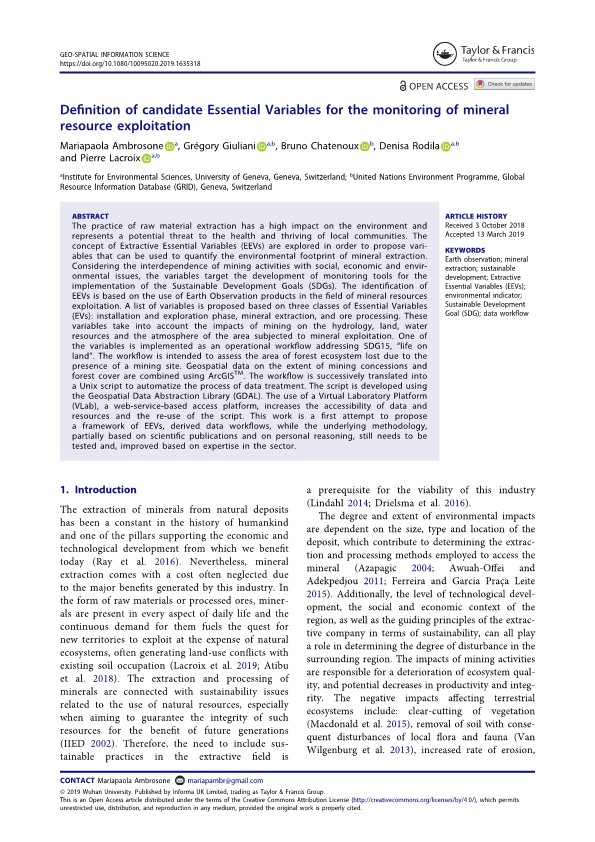Resource
Definition of candidate Essential Variables for the monitoring of mineral resource exploitation
Description
The practice of raw material extraction has a high impact on the environment and represents a potential threat to the health and thriving of local communities. The concept of Extractive Essential Variables (EEVs) are explored in order to propose vari- ables that can be used to quantify the environmental footprint of mineral extraction. Considering the interdependence of mining activities with social, economic and envir- onmental issues, the variables target the development of monitoring tools for the implementation of the Sustainable Development Goals (SDGs). The identification of EEVs is based on the use of Earth Observation products in the field of mineral resources exploitation. A list of variables is proposed based on three classes of Essential Variables (EVs): installation and exploration phase, mineral extraction, and ore processing. These variables take into account the impacts of mining on the hydrology, land, water resources and the atmosphere of the area subjected to mineral exploitation. One of the variables is implemented as an operational workflow addressing SDG15, “life on land”. The workflow is intended to assess the area of forest ecosystem lost due to the presence of a mining site. Geospatial data on the extent of mining concessions and forest cover are combined using ArcGISTM. The workflow is successively translated into a Unix script to automatize the process of data treatment. The script is developed using the Geospatial Data Abstraction Library (GDAL). The use of a Virtual Laboratory Platform (Vlab), a web-service-based access platform, increases the accessibility of data and resources and the re-use of the script. This work is a first attempt to propose a framework of EEVs, derived data workflows, while the underlying methodology, partially based on scientific publications and on personal reasoning, still needs to be tested and, improved based on expertise in the sector.